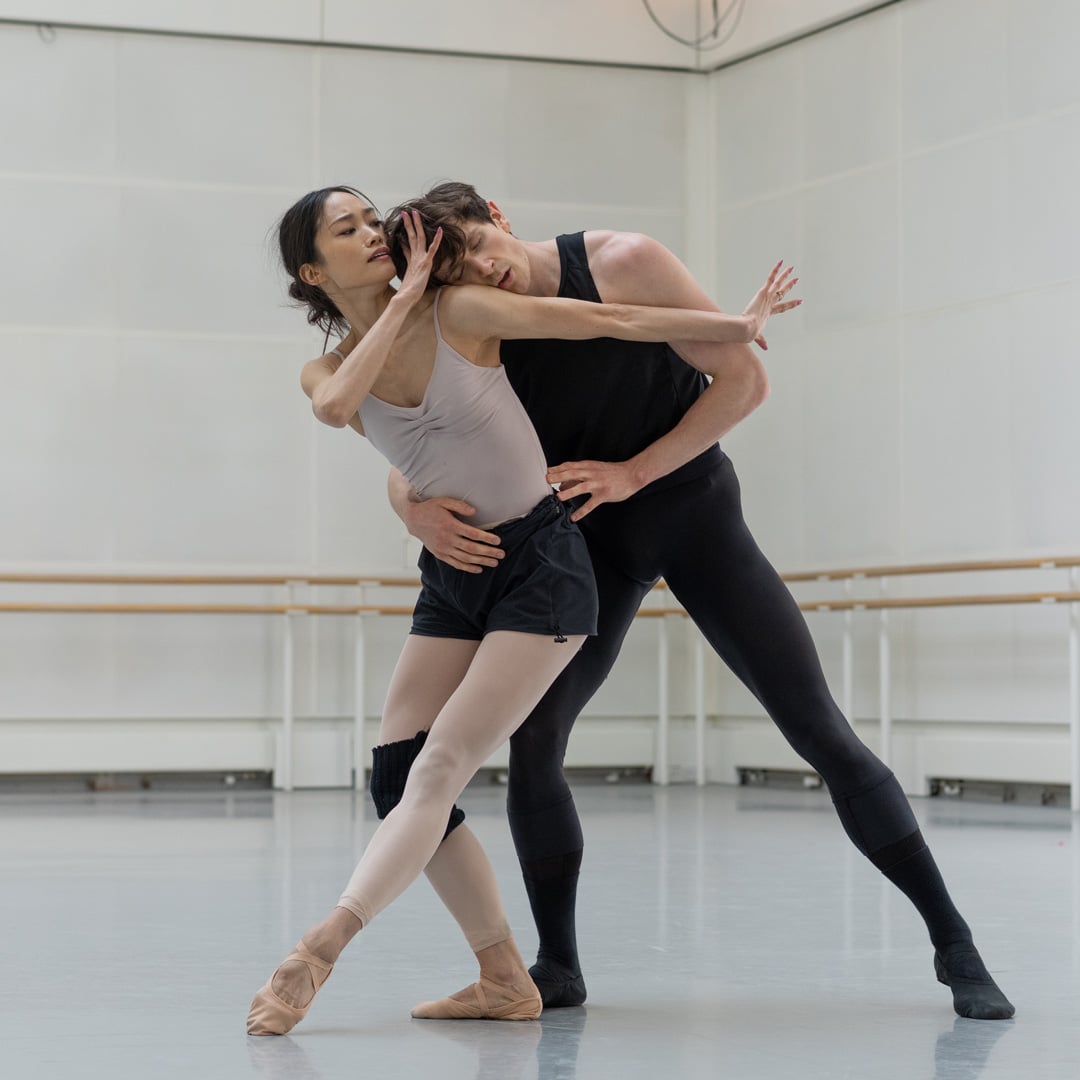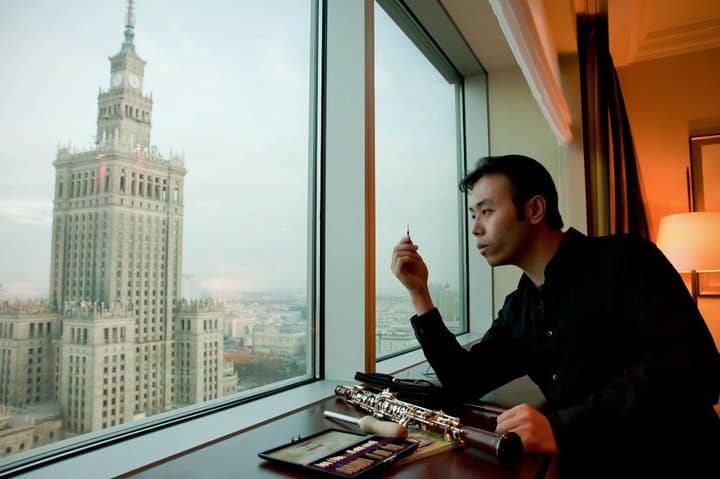Alastair Macaulay: Covent Garden is losing classicism
balletThe former NY Times chief ballet critic takes issue, in an exclusive slippedisc.com review, with London’s latest triple-bill:
by Alastair Macaulay
The words “classical” and “ballet” are often used as if tautologous. Actually, the Royal Ballet has had expressionist and anti-classical streaks since its inception in the 1930s. Ballet is a technique; classicism – quite different from the academicism that many ballet companies try to observe – is an ethos, an outward way of courteously addressing life, an approach that’s gone on changing in manner over the centuries. (Most of the dance classicists of recent decades have largely come from outside ballet.) The Royal’s new triple bill of British choreography might be planned to demonstrate different aspects of this point.
It began with the world premiere of “Untitled”, by Wayne McGregor, a former modern dance figure who has been the Royal Ballet’s resident choreographer since 2006; its centrepiece was a reworked revival of Christopher Wheeldon’s “Corybantic Games” (2018); it concluded with Kenneth MacMIllan’s “Anastasia Act III” (1967). The MacMillan is an intensely expressionist drama – even a mad scene – that depicts a nightmare in which classicism is no longer possible. The Wheeldon is one of this choreographer’s many sophisticated exercises in all-dance neoclassicism, making glossily postmodern comments on ballet and history without creating a stage world and without any depth. But the McGregor – which may be the best work to date by this widely overrated, often problematic, but always large-spirited and adventurous choreographer – keeps suggesting that McGregor’s experiments with dance theatre have brought him close, here, to a new form of classicism.
McGregor never shows all his cast onstage at one time. When they take their bows, it’s a surprise to find there are nineteen of them. The dance style is athletic, often acrobatic; the upper body is as active as the legs. Surprises punctuate its course. It begins with a male duet in which the two men, Leo Dixon and Joseph Sissens, are far from alike (Sissens, lifted and turned, has the more passive role, though he’s evidently lively and unpredictable); it features solos for women who don’t dance on point as well as duets for women who do; Sissens – who is emerging as the freest spirit in the Royal Ballet – later partners a woman.
Although “Untitled” begins and ends with adagio sequences of quasi-sculptural firmness, it has allegro sequences. The final male solo, for Calvin Richardson, has such technical rigour and inventive conjunctions of movements that it brings the work to a riveting conclusion. We’ve been watching an anthropologically diverse study of humans as expansive and complex creatures who themselves are capable of evolution.
“Untitled” creates a coherent world onstage. It helps that the set – a 1962 painting by Carmen Herrera (1915-2022), “Blanco y Verde” – suggests a seascape, with off-white sea and sky framing an geometrically emerald isle. The decor also includes her standalone abstract sculpture “Estructuras”. The painting may suggest Greenland, this the tip of an iceberg; and the music, two works by Icelandic composer Anna Thorvaldsdottir (“Metacosmos” and “Catamorphosis”) that suggest intensely textured change (geological or climatic) on a vast scale. I wish that the differentiated body-tight costumes, by Burberry, were less relentlessly composed of the same green and white as the Herrera set; and that Lucy Carter’s coolly white lighting features more of the music’s emphasis on gradual change.
Too bad that there are several blah passages along the way. How odd that McGregor, who often appears to treat dancers with such respect while liberating them in terms of outgoing energy and stylistic neologisms, sometimes has men pick up women and then travel, spinning, across the stage, with the lifted women held like trophies or shopping. I wish, too, that he made more drama from contrasts. This is not a work from which meanings pour. Yet McGregor, here, is opening up dance’s expressive potential.
“Corybantic Games” is Wheeldon’s treatment of Leonard Bernstein’s “Serenade (after Plato’s ‘Symposium’)”, a score that Alexei Ratmansky choreographed for American Ballet Theatre in 2016. Ratmansky’s creation, one of the dance masterpieces of our century, attending closely to Bernstein’s dramaturgy and made the score sound like its composer’s very greatest achievement; Wheeldon, curiously, makes it sound like a completely different – far less attractive – score. He attends to his music’s every detail; yet he stays spiritually outside it.
There’s endless surface to Wheeldon’s choreography, and no depth. Like McGregor and others, Wheeldon uses same-sex duets here – but with a showy, “Look, Ma, aren’t I bold?” emphasis that stops them from seeming natural or organic.
MacMillan originally made his “Anastasia” as the one-act ballet we see here: the protagonist is Anna Andersen, an alienated woman who insisted she was Anastasia, the youngest daughter of Tsar Nicholas II, missing her slaughtered family but suffering both from memories (Rasputin not least) and from social rejection. The role – though danced on point – is entirely anti-classical, with gestures of arms and hands meted out with heavy emphasis not once but successively.
The title role’s original interpreter, Lynn Seymour, gave a performance of astonishing power in it up to age fifty. Without that searing intensity, the single-act “Anastasia” looks dramatically foolish. Those expressionist repetitions are silly (Rasputin pulls the Tsarevich’s legs apart again and again while facing us and crossing the stage, to bang home the simple point of his manipulative force). Laura Morera on Friday night performed with honesty, commitment, and anger; but even she could not redeem this coarse conception.
photo: ROH






I thought the word was “tautological”.
The online dictionaries say that
tautologous and tautological are synonymous. The former has been around since 1693.
I believe the word you’re looking for is tautological.
Also, a funny thing about this website is how the NY Times is an object of (jealous?) anger until it’s suddenly used to give someone like Mr Macaulay credibility.
NY Times was fortunate to have Macaulay as a dance writer, not the other way around. Much fewer people read NY Times for dance reporting now.
Hear hear
Wonderful piece of writing! Arts criticism often seems to be in dire straits–bland, uninformed, basically just marketing–and this reminds me of what it can really do: teach the reader about the art form and the relationships therein; and recognize something wonderful even while critiquing its shortcomings (eg, “widely overrated, often problematic, but always large-spirited and adventurous choreographer”). Really interesting read.